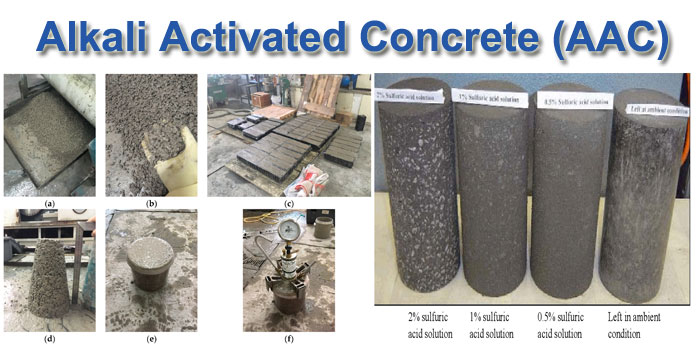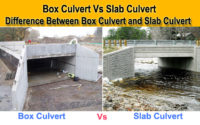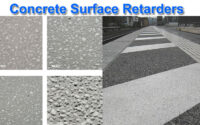Alkali Activated Concrete (ACC) – Intro and Composition
Alkali-activated concrete (AAC) is a class of cement-free concrete serving as an alternative to Portland cement concrete (PCC). This article will help you to understand what is alkali-activated concrete (ACC)?
In AAC, an alternative binder entirely replaces the cement. Instead of using ordinary Portland cement (OPC) and water, other supplementary materials like blast furnace slag (BFS) or fly ash (FA) is used in AAC along with an alkaline activator.
The ability of alkali-activated concrete (AAC) as a sustainable material to swap with ordinary Portland cement concrete is still being understudy and research. Due to its low energy cost, high strength, and durability compared to ordinary Portland cement, it is gaining popularity.
Composition of Alkali-Activated Concrete
The two key elements of alkali-activated concrete are:
1. Alkaline Activators
Caustic alkali and alkaline salts are the alkaline activators that are normally used. Their composition comprises caustic soda, silicates, non-silicate weak acid salts, alumina-silicate, aluminates, and non-silicate vital acid salts.
These activators are added to the slag either by dissolving in water or by blending it with ground slag before mixing with water.
2. Cementing Components
Cementing components used in alkali-activated cement or concrete are blast furnace slag, silica fume, steel slag, coal fly ash, zeolite, etc.
Hydration of Alkali-Activated Concrete
The hydration reaction in alkali-activated concrete is a bit complex than ordinary Portland cement. Its mechanism is under research as it is still not completely understood. As the characteristics of slag used vary from source to source, so vary the reaction and microstructure.
Calcium silicate hydrate gel (C-S-H) is the main hydration product of alkaline-activated slag cement at room temperature.
Future Scenarios of Alkali-Activated Concrete
Comparing traditional Portland cement and alkali-activated cement in terms of their products of hydration, the earlier gives calcium silicate hydrate (C-S-H) and calcium hydroxide, while the second provides poorly crystallized alumina-silicate gel that contains alkalis, which also provides enhanced durability to the concrete.
Besides, AAC plays a vital role in the protection of the environment by utilization of the by-products and offering efficient waste management.
Challenges faced by Alkali-Activated Concrete
1. Alkali-activated concrete faces numerous challenges:
2. The discharge of alkalis reacts with carbon dioxide resulting in efflorescence in the form of alkali carbonates.
3. Drying shrinkage and cracking are noticed during dry conditions exhibited by AAC.
4. The reaction and mechanism of AAC can be exclusively studied through varied research.
5. The chemical admixtures do not work well with AAC as it works with ordinary Portland cement.
6. The chemical and physical properties of raw materials, especially slag materials differ, based on the source that would actually affect the strength and properties of concrete.






